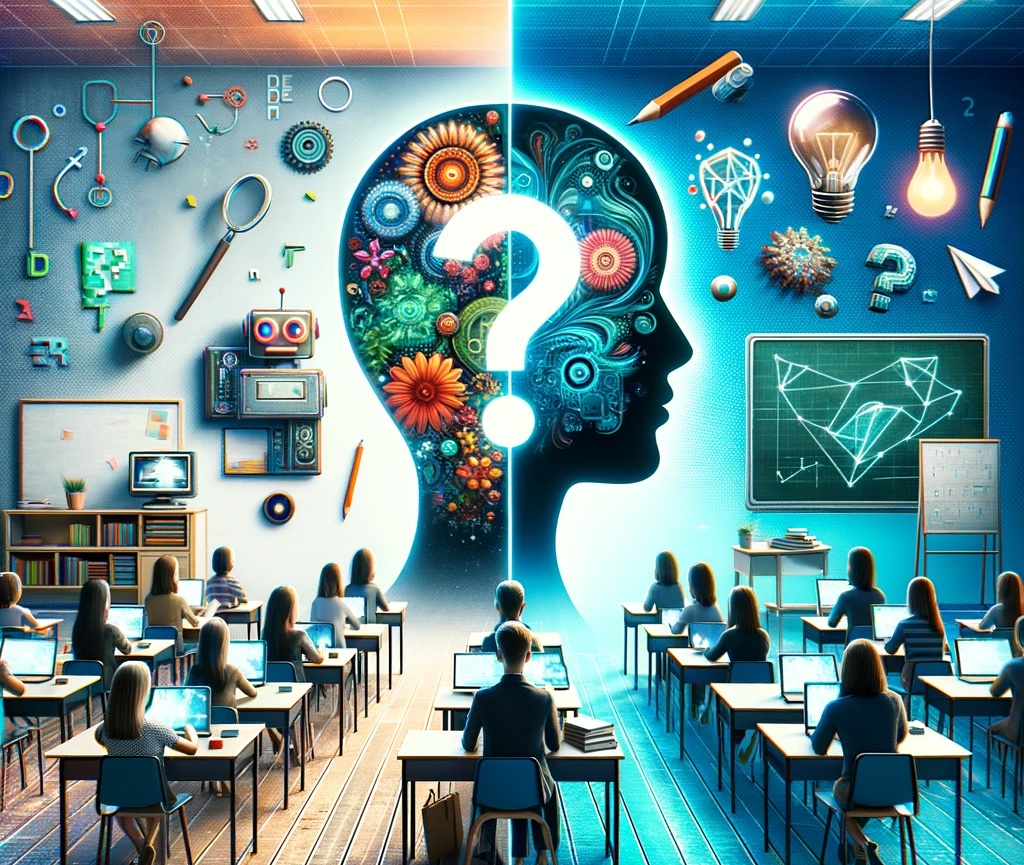Generative AI for Faculty
Welcome to the Future of Learning!
Greetings to our esteemed faculty and curious minds! We're thrilled to introduce you to our dedicated space exploring the dynamic world of Generative AI in education. Here, you'll discover how this groundbreaking technology is transforming the way we teach, learn, and innovate. Join us in this exciting journey as we unravel the possibilities and shape the future of academia together.
Okay, we didn't really write that. That text was generated by ChatGPT 4.0 when prompted to generate a welcome message for this website. You can kind of tell by the over the top language but it is important to realize we could have asked it to revise the tone. On this page we will share some resources around GenAI for faculty and attempt to present a more realistic picture of GenAI's impacts on education.
Considerations for Teaching with AI
When integrating AI tools into your teaching you might want to consider the following.
- Establish class norms for appropriate use of Generative AI. Being up front with students can encourage them to be more respectful in their use of these tools.
- Design assignments where students are invited to use generative AI. This helps students learn appropriate ways to use these technologies so they can be more successful rather than using them to circumvent actual learning.
- Require students to share sequence of prompts and output generated. Creating iterative prompts that are coherent and logical can help you learn more about what students understand as well as the misconceptions they may have around different topics and concepts.
- Have students analyze, evaluate, and revise generated content for things such as accuracy, bias, and hallucinations or fabrications. This will help students demonstrate their understanding of the material while also reinforcing the need to fact check the content that is generated.
Affordances and Limitations

Generative AI presents a landscape rich with opportunities and challenges. Its affordances are real but so are its challenges. Speeding up content creation, idea generation, and editing are real but so are questions about ethical considerations, privacy concerns, the potential for bias in AI algorithms, and the need for balancing technology with human touch. As we integrate AI into our classrooms, it is essential to weigh its potential against these challenges, ensuring that our use of this technology remains both responsible and grounded in the real needs of our learners.
U-MGPT vs ChatGPT

U-M GPT is university maintained portal to several Large Language Models including GPT 3.5, GPT 4, LLaMA, and even an image generator OpenJourney. This inhouse tool means that prompts and outputs are not shared with OpenAI or any other provider and that they stay with the university providing greater privacy protections. There is no charge for U-M GPT which is a nice benefit since GPT 4 is currently a paid product (note that there are other U-M GenAI supported tools that do cost money).
Anyone with a university login can access U-M GPT by logging in with their university credentials and more information can be found in the Generative AI at UM-Ann Arbor.
Prompting
Prompting AI models is maybe a more nuanced practice than you might imagine. You should expect to revise prompts to get better outputs. Our example below shows one example of a revision process but you should also check out the UM-Dearborn prompt engineering page for more.
AI Prompt: "You are a professional graphic designer creating a website for faculty about generative ai and you have been tasked with creating an engaging image for a website."
AI generated image response:

AI Prompt: "That seems like more of a business setting. Can you make it look more like a university classroom?"
AI generated image response:

AI Tools for Teaching & Learning
There are a variety of AI tools to consider using in your teaching and we certainly can't begin to include them all in a single webpage so consider this just an introduction to places to look to keep track of potentially useful tools. We have already mentioned ChatGPT and U-M GPT previously on this site and it goes without saying that these tools can be useful in generating ideas for assignments, rubrics, discussion prompts, presentations, quiz/test questions, course descriptions, and much more. You might find it useful to read through the Open AI blog post on Teaching with AI to get some more ideas on how to use tools like ChatGPT in your teaching. Likewise, the university has put together a useful webpage of resources on using U-M GPT for teaching and research. You can also check out Old Dominion's AI resource site for professors and instructors, which has an extensive list of tools by category in an easy to read table. This list covers tools that can help with writing, presentation creation, exam and test question generation, text-to-speech, image/video/audio creation and all sorts of other things. Taking a few moments to explore it might help generate some ideas for how you could use AI in your classes.
Looking for local teaching help with GenAI?
The Hub for Teaching and Learning Resources here at the University of Michigan - Dearborn has several options for teaching help around GenAI.
- Schedule a one-on-one GenAI consultation with an Instructional Designer
- Stress test an assignment
- Develop a class policy around GenAI (we have a GenAI tool that can help)
- Design an assignment that uses GenAI
- Check out posts about GenAI on the Hub Blog
- Always being updated
- A Guide from the Hub for Teaching and Learning Resources around Generative AI at UM–Dearborn
- This is a living document of some length with a lot of information about what GenAI is and some of the concerns around it
- Podcast Episodes from Teaching in Higher Ed focused on GenAI
- Curated around GenAI but also part of the Hub’s Scholar in Residence program
- Several episodes feature UM-Dearborn voices
- Video Presentation Getting Started with AI Literacy
- Presented by Autumm Caines Instructional Designer in the Hub
